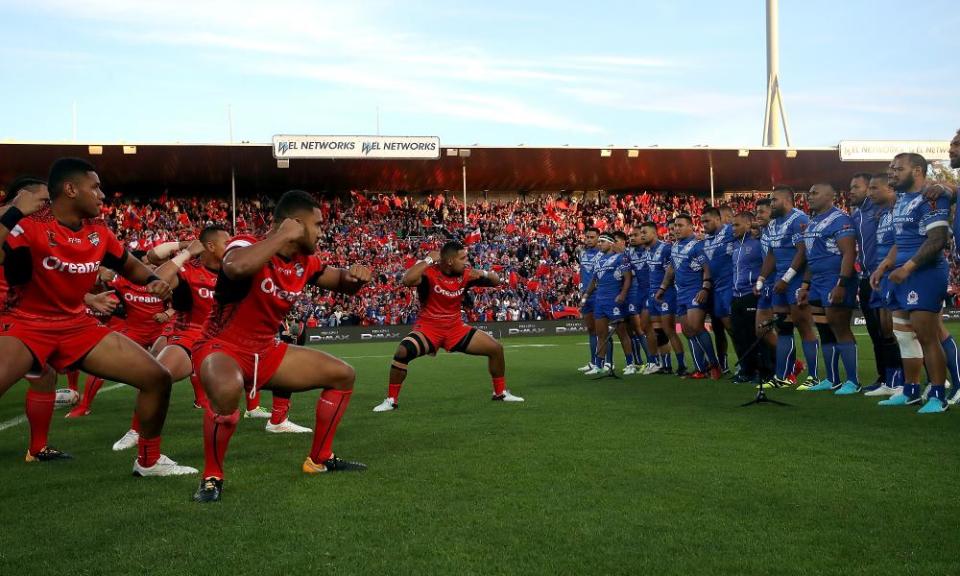Rugby League World Cup has been snubbed in NRL-obsessed Australia

The Rugby League World Cup is in its fifteenth edition, with its first iteration in 1954. Yet, despite a history much longer than its cricket or rugby union counterparts, it struggles for widespread relevancy and respect. This is case even in Australia – where the 2017 tournament is being held – and where the 13-man code is king in two of its biggest states and cities.
The NRL might be a multi-billion dollar business that attracts attention, huge sponsors and column inches across most of the country, but international rugby league is a different kettle of fish. Australia can be an insular, inward-looking place, and that is true of the way it has treated global rugby league’s showpiece event.
The 2013 World Cup, held in the UK, Ireland and France, is regarded as the most successful World Cup in history in terms of revenue, exposure and attendances. Then, the Kangaroos were triumphant, dominating New Zealand 34-2 in front of a record 74,468 fans at Old Trafford, but big crowds were also secured in diverse locations like Cardiff, Bristol, Warrington and London. A profit of close to £4 million was generated, with the barrier set high for the 2017 version.
But before a Steeden had even been kicked, there were questions raised as to the controversial choice of venues and host broadcaster. Channel Seven won the World Cup broadcast rights, despite Channel Nine’s two-decade hold of covering rugby league in Australia. The old, reliable voices and faces of Ray Warren, Phil Gould and Peter Sterling were out, while no radio broadcaster partner was secured.
It is understood Seven’s more expensive bid helped it get it over the line instead of Nine’s trusted panel. Fan reaction to Seven’s coverage has been mixed, but TV ratings have been strong – the World Cup opener in Melbourne between England and Australia pulled in 1.4 million viewers, the highest-rating league game this year outside of the NRL grand final and state of origin.
Spectators have voted with their remotes but not necessarily with their feet. While attendances in the Papua New Guinean capital Port Moresby– where rugby league is followed with religious fervor – have been impressive (as in Auckland and Hamilton), the same cannot be said for other locales.
New South Wales was overlooked for World Cup matches, despite it being a rugby league stronghold. No matches have been staged in heartland areas such as Newcastle, Wollongong, Gosford and western Sydney. Instead, Melbourne’s AAMI Park, where less than 23,000 fans saw the Kangaroos defeat England, and stadia in Canberra, Perth and Darwin were chosen. Sydney is hosting just two matches, with only 10,237 watching England beat Lebanon – a fact noted by the travelling English media – and 21,127 seeing Australia down the Cedars at the Sydney Football Stadium.
In this, World Cup organisers have chased coin over crowds. The NSW state government refused to bid for games, so matches where handed out to the Victorian, West Australian, Queensland and ACT governments instead. While revenue has been guaranteed, game atmosphere and attendance size has suffered.
The Canberra market has been flooded with three matches while Newcastle’s McDonald Jones Stadium, which had the fourth-highest average NRL attendance in 2017 despite hosting the wooden spooners, received nothing.
The north Queensland locales of Townsville and Cairns are hosting a staggering six of the total 28 World Cup matches being played, despite their low population base. The long distance between host cities has meant recreating a proper tournament feel and community, as in 2013, has been difficult. Spectators cannot travel to games every day if they want to. The lack of mid-week matches – with all contests consigned to Fridays, Saturdays and Sundays – has also contributed to this.
Low-key publicity and promotion, outside of the host broadcaster, has not helped either. Some sports fans do not even know the tournament is on. Media coverage has been focused on NRL transfer stories, the Melbourne Cup, the women’s and men’s Ashes series and the Socceroos bid to reach Russia; anything but the Rugby League World Cup. Even in News Corp papers in rugby-league loving Sydney, the tournament has been buried behind story after story on Cooper Cronk’s move to the Roosters, Mitchell Pearce’s departure and the future of Penrith’s Matt Moylan.
The World Cup’s most covered yarns have been around off-field, alcohol-related incidents involving the Italian and Scottish teams, and a biting allegation made against an English winger. Meanwhile, genuine feel-good stories, like Samoa and Tonga’s amazing pre-game face-off, and the admirable performances of Lebanon and Fiji, have received fewer headlines comparatively.
At the core of the issue is that Australia loves the NRL – not rugby league. International rugby league is an irritant to the NRL, a mosquito on the arm of the Australian game, not the core focus like it is other parts of the world. That dismissive attitude sadly flows from the NRL down.
“I get the impression from speaking to people involved in the game in the southern hemisphere that the World Cup is looked upon as a third tier comp,” said Wales coach John Kear.
“They say top tier is state of origin, second tier NRL and this is seen as a standard below NRL. It probably is and that is reflected in the interest shown in it.”
That view means many genuine, engaging World Cup moments and contests have been missed and ignored. Perhaps the only thing that would wake up mainstream Australia to the tournament happening on its shores right now would be if the defending champions were knocked out prematurely. A shock Kangaroos exit might demonstrate that there is life outside of the NRL after all.

 Yahoo Sport
Yahoo Sport 





































